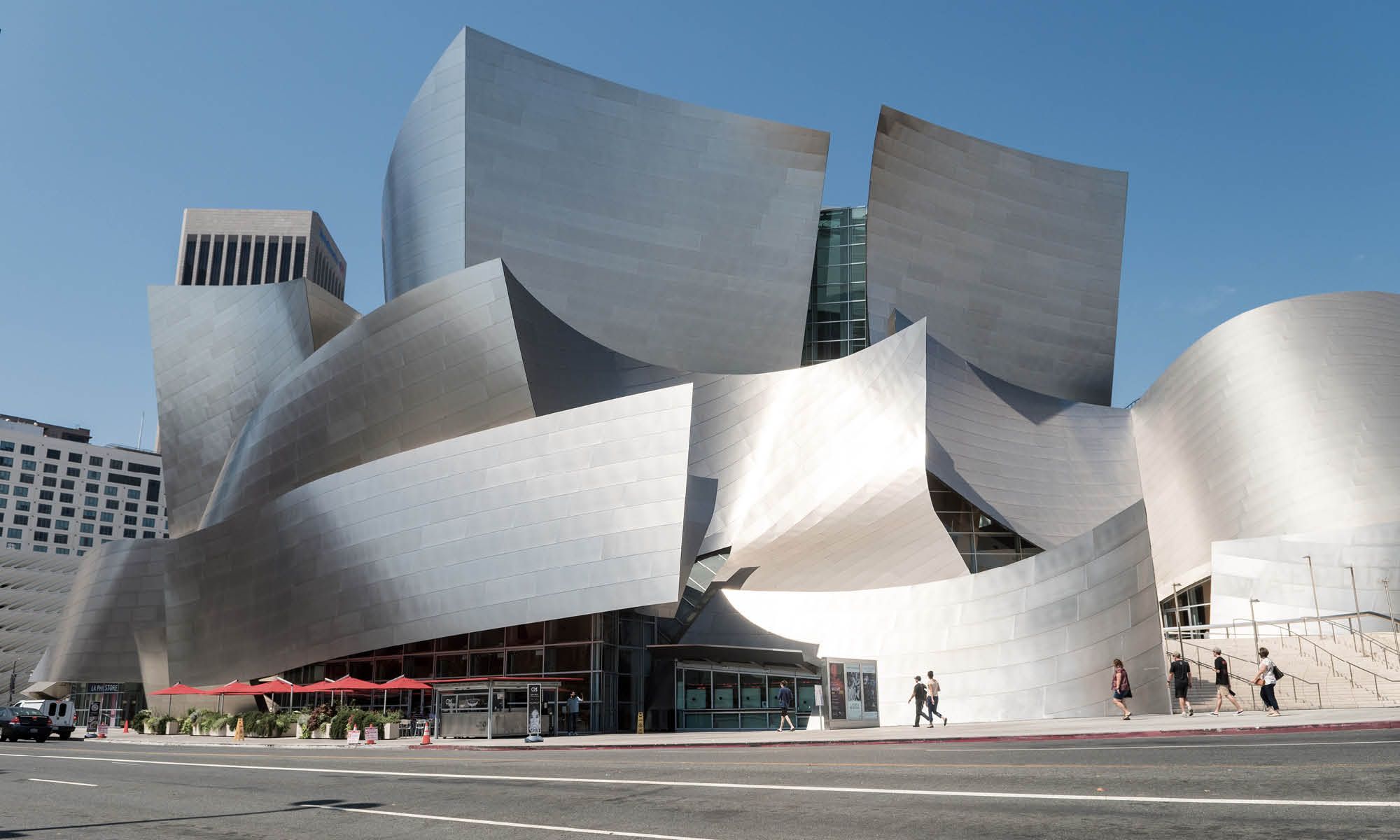
Sloping walls, tilting rooms, structures seeming to collapse at any moment: deconstructivist buildings will inevitably catch your eye. But what is it about this type of architecture that makes us gasp? In the following, we break down its characteristic features, historical background, and most famous examples.
Futuristic monoliths by Zaha Hadid, surreal buildings by Frank Gehry, abstract sculptures by Daniel Libeskind – examples like these have brought deconstructivism to the forefront of the architectural scene. But to understand the underlying concept, we have to look beyond the impressive facades and explore their historical – and philosophical – background.
What is deconstructivism?
In the most literal sense, “deconstruct” means to “dismantle” or “take apart”. In the context of architecture, however, this term refers to more than tearing down existing structures. Deconstructivism emerged in the 1980s, a time when postmodernist ideas were still prominent among artists and critics. Postmodernism rejects the notion of absolute “truth”, emphasizing the inherently subjective and fragile nature of meaning – at times denying any sense of stability or structure.
Disruption with a purpose
Deconstructivist architecture moved beyond the relativism of postmodernist thought. It was inspired by French philosopher Jacques Derrida. According to Derrida, a word such as “house” only makes sense based on its difference from “shed”, “cabin”, and other related words. Thus, meaning is never complete or total. Deconstructivist architects translated this idea into a new way of building: not entirely rejecting, but rather challenging and reinventing conventional structures.
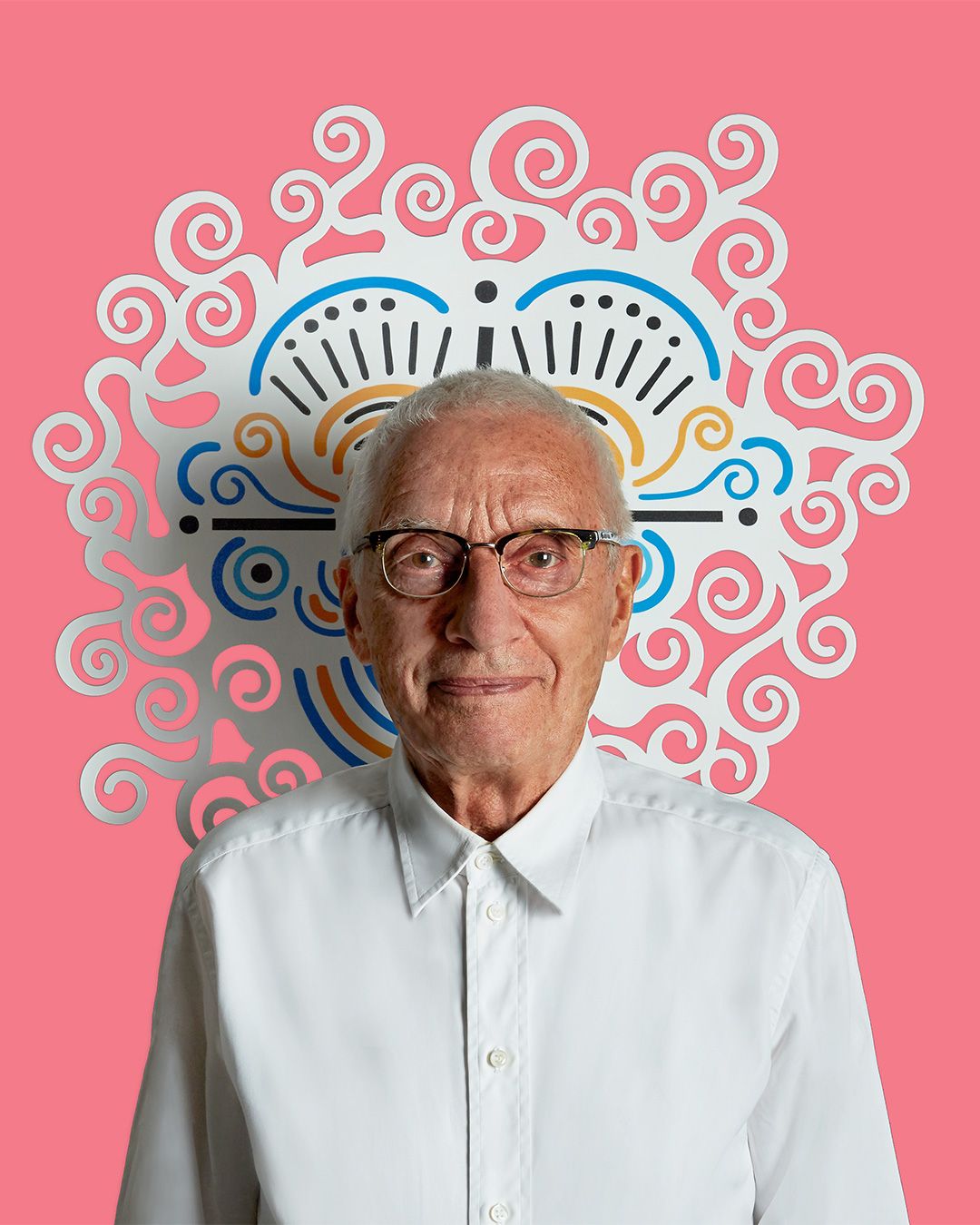
What makes deconstructivist buildings stand out?
Apart from Derrida’s post-structuralist philosophy, deconstructivism was also influenced by constructivism – an architectural movement that flourished in the Soviet Union after World War I. Russian constructivists wanted to break with geometric norms of their time, reflecting modern industrial spaces with abstract and austere drawings.
Apart from Derrida’s post-structuralist philosophy, deconstructivism was also influenced by constructivism – an architectural movement that flourished in the Soviet Union after World War I. Russian constructivists wanted to break with geometric norms of their time, reflecting modern industrial spaces with abstract and austere drawings. In a similar vein, deconstructivist architects sought to fragment a construction and explore asymmetrical relations – while still maintaining the core function of a space. Architects began to manipulate surface structures, creating non-rectilinear shapes which seem dislocated at first glance. Their designs visualise a sense of “controlled chaos”: distorted walls and corners, skew lines, and ostensibly random arrangements are put together like collages. Thus, even massive concrete blocks can assume the appearance of intricate artistic sculptures.
Hallmark masterpieces by deconstructivist architects
In 1988, an exhibition titled "Deconstructivist Architecture" was launched at the Museum of Modern Art in New York City. This exhibition introduced the stylistic direction to a wider audience, presenting works by seven designers and architects. However, a building designed by Frank Gehry ten years earlier already displayed typical deconstructivist features.
In 1988, an exhibition titled "Deconstructivist Architecture" was launched at the Museum of Modern Art in New York City. This exhibition introduced the stylistic direction to a wider audience, presenting works by seven designers and architects. However, a building designed by Frank Gehry ten years earlier already displayed typical deconstructivist features. His house in Santa Monica, California is now considered the first original paradigm. But Gehry did not stop there: throughout his career, he realised several projects that set the framework for what we associate with deconstructivism today. The following five examples present works of Gehry and other key players to illustrate the movement’s great versatility.
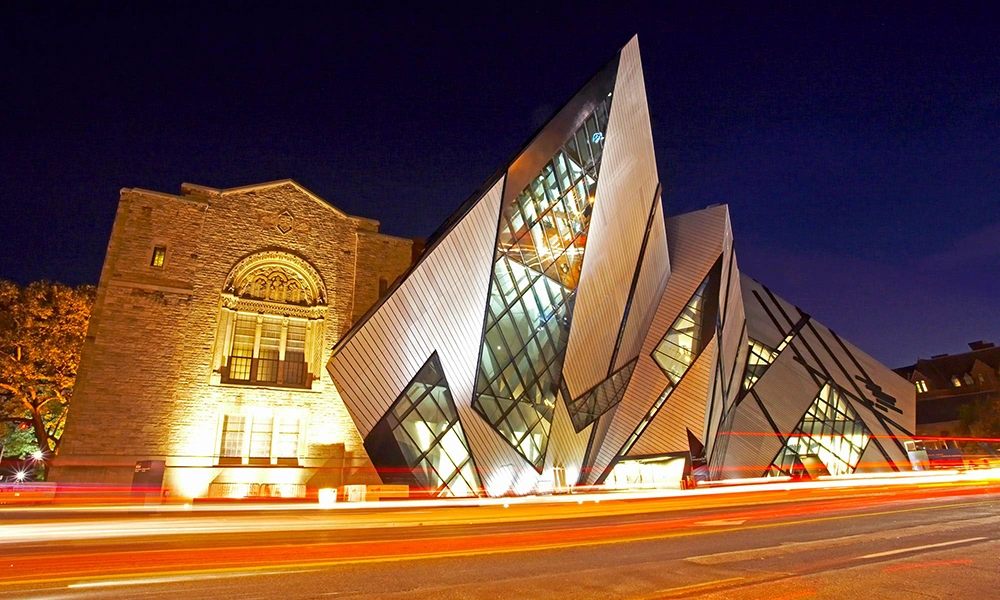
1. Walt Disney Concert Hall by Frank Gehry
In the middle of Los Angeles, Frank Gehry has built a monument for both American cinema and deconstructivist architecture: the Walt Disney Concert Hall. Shiny and matt stainless-steel surfaces reflect the sunlight, reminiscent of musical notes jumping up and down the page.
Inaugurated in 2003, the concert hall tells an intriguing story with its collage-like structure and looped forms. Gehry also designed fascinating constructions in Europe, such as Neuer Zollhof and the Vitra Design Museum in Germany.

2. Heydar Aliyev Centre by Zaha Hadid
With her flowing, dynamic forms, the "Queen of Curves" Zaha Hadid took constructivism one step further: she managed to make even steel and concrete buildings appear to be in motion, defying all straight lines. Among her masterpieces, the Heydar Aliyev Centre in Baku was designed during an international competition in 2007.
Serving as the cultural centre of Azerbaijan, it deviates conspicuously from the surrounding buildings: Hadid’s deconstructivist architecture is replete with sculptural waves, curves, and folds. The light-reflecting shell changes its appearance depending on the sun’s course. In order to erect the challenging construction, Hadid combined a concrete body with a lattice-frame system supported by glass-fibre panels.
3. Royal Ontario Museum by Daniel Libeskind
Daniel Libeskind, an American urban planner and architect, has left his deconstructivist mark at several places worldwide. One of his most famous works is the extension for the Royal Ontario Museum (ROM), which opened in 2007 in downtown Toronto, Canada. The name of the new building, "Michael Lee-Chin Crystal", refers to the project’s sponsor and the building’s abstract appearance:
five intersecting, metal-clad structures are joined in a futuristic sculpture without any right angles or straight walls. Organically interlocking prisms transform the museum complex into a giant crystal. To this day, the ROM extension ranks among the most complicated building projects in North America.
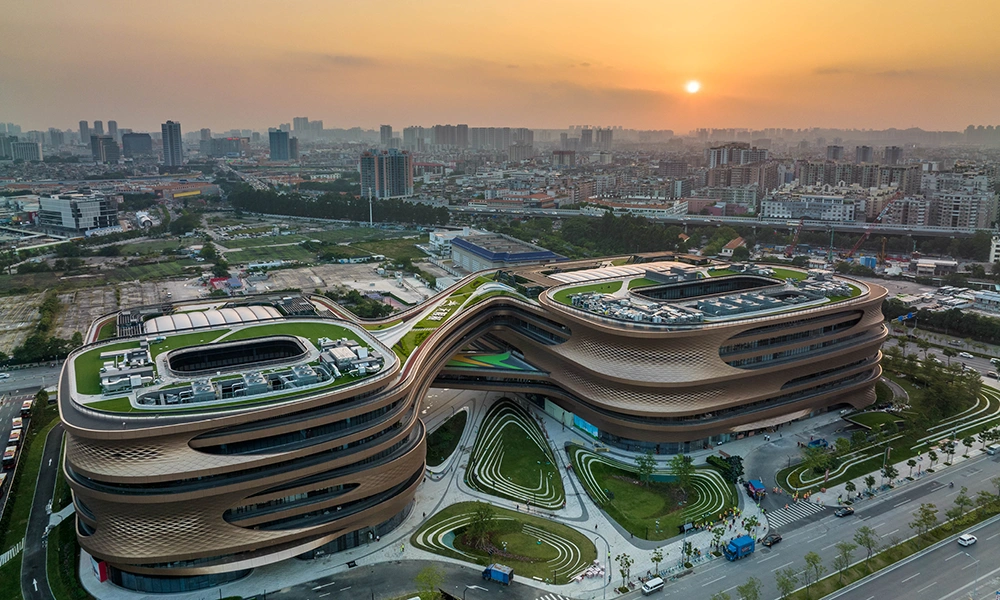
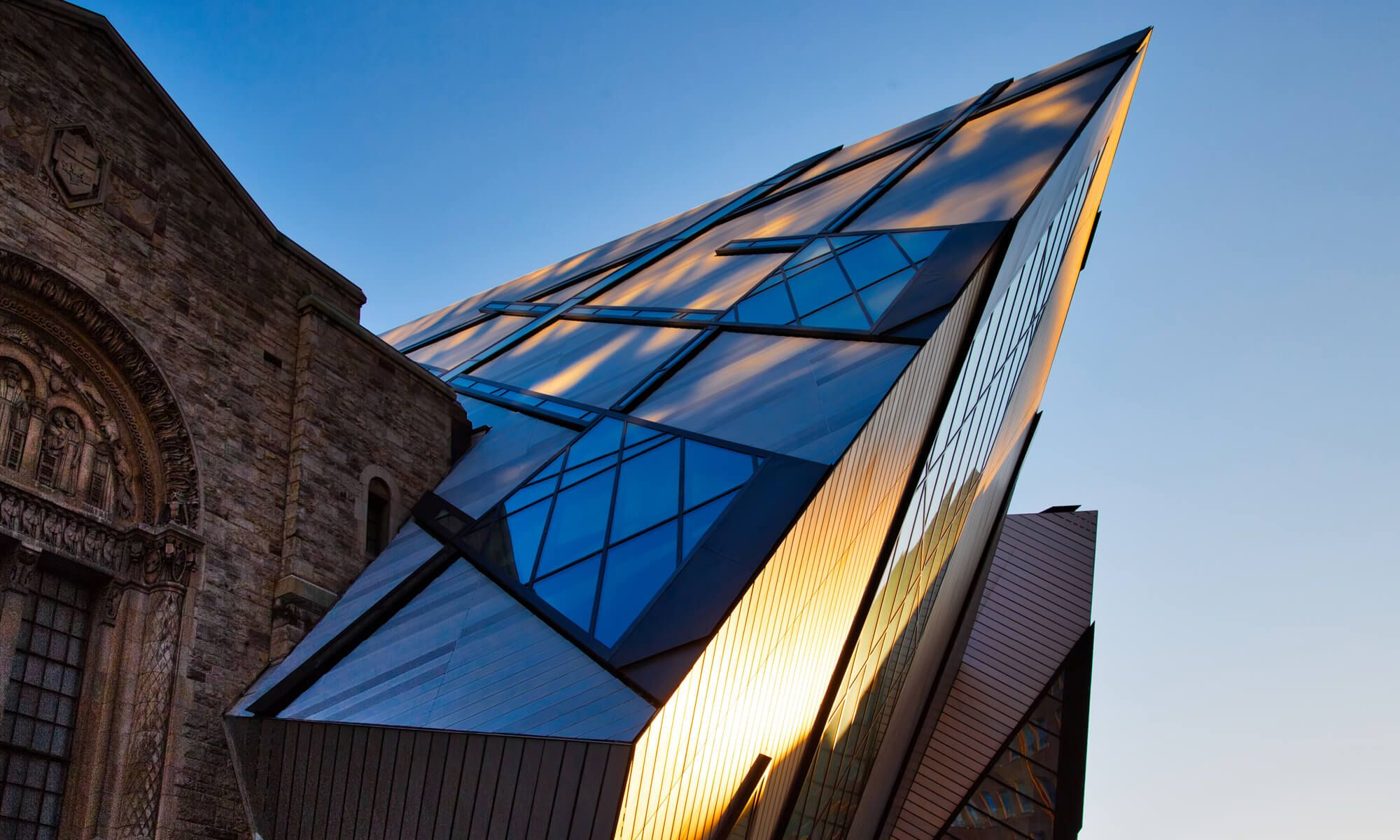
4. National Stadium in Beijing by Herzog & de Meuron
With the National Stadium in Beijing, the architect duo Herzog & de Meuron developed a new kind of public space for the 2008 Summer Olympics. The gigantic arena deconstructs the architectural concept of a conventional sports facility: even from a distance, the facade’s irregular structure visibly breaks down the building into massive single pieces. Separate elements support each other and form a grid-like, open formation that blurs the lines between inside and outside. Oblique columns, beams, and stairs interweave into a thicket seemingly created by nature – hence the name "bird's nest".
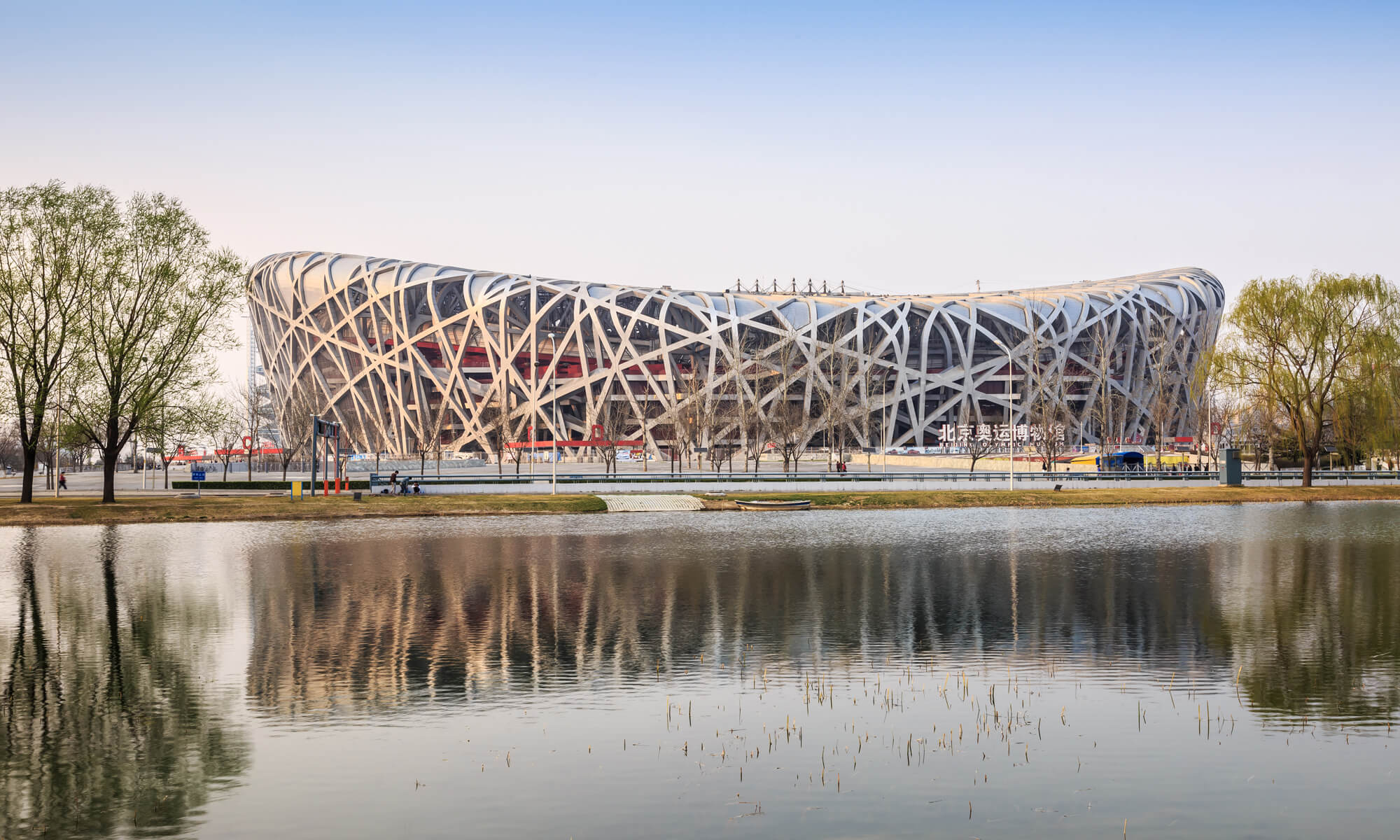
5. Groninger Museum by Alessandro Mendini & Friends
In the Netherlands, a building hosting the Groninger Museum demonstrates how an art venue can turn into an art object itself. Italian designer Alessandro Mendini was commissioned to design the new museum when the old one had become too small. Construction works began in 1992 and lasted for two years, until the new museum was finally moved. Throughout the process, Mendini collaborated with three other architects: Philipe Starck, Michele de Lucchi, and Coop Himmelb(l)au all added their own contribution to the new building.
The result is another striking example of how deconstructivism turns architecture as we know it upside down. A structure made from brick, a circular construction clad with aluminium panels, and a pavilion made from steel, concrete, tar, and glass contrast both each other and the main complex. The latter stands out with its colourful facade and yellow tower at the centre. Both internally and externally, a mix of different styles reinforces the building’s collage-like character: from Bauhaus elements to Italian terrazzo motifs, you will find unexpected twists and turns everywhere you look.